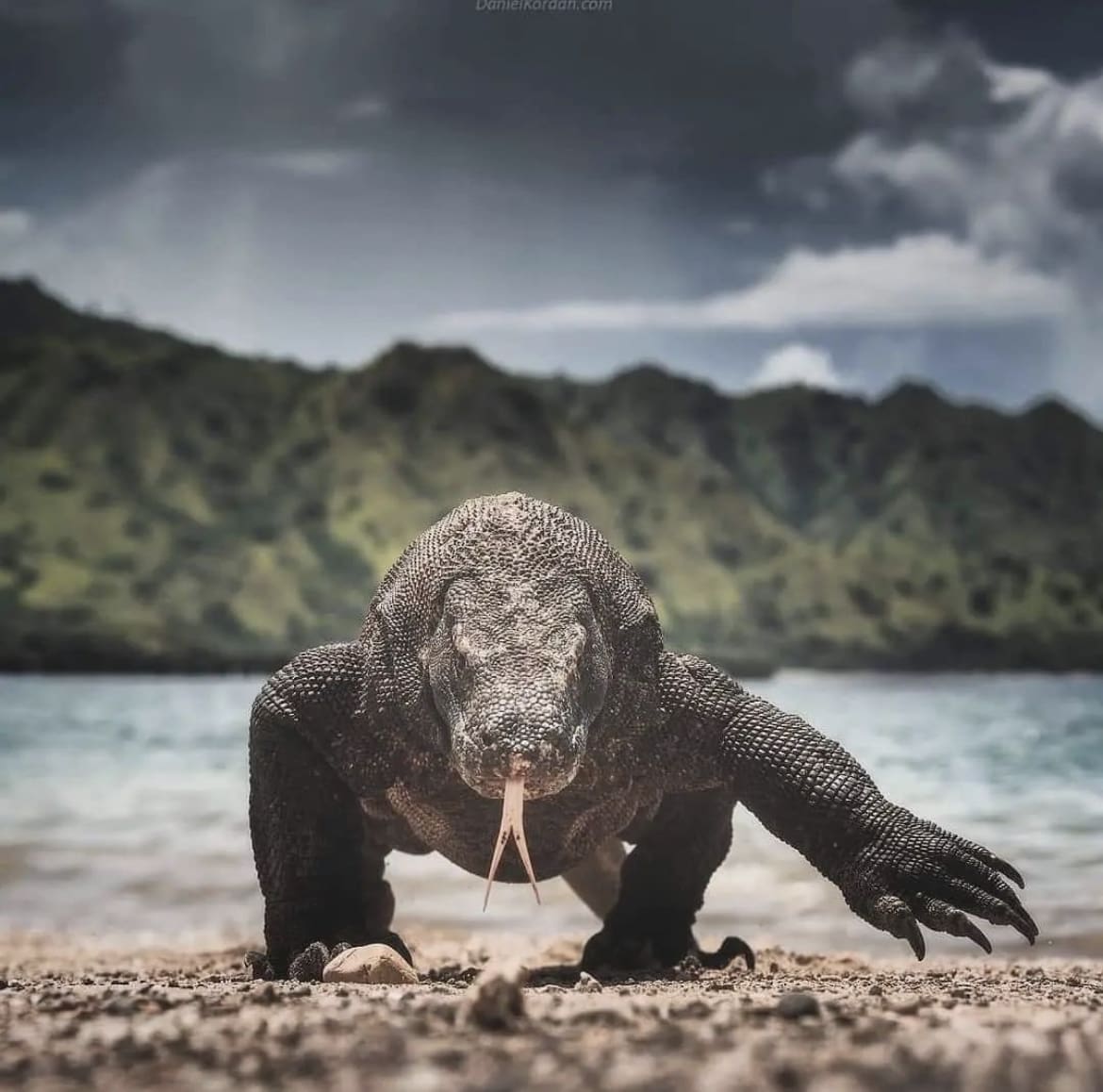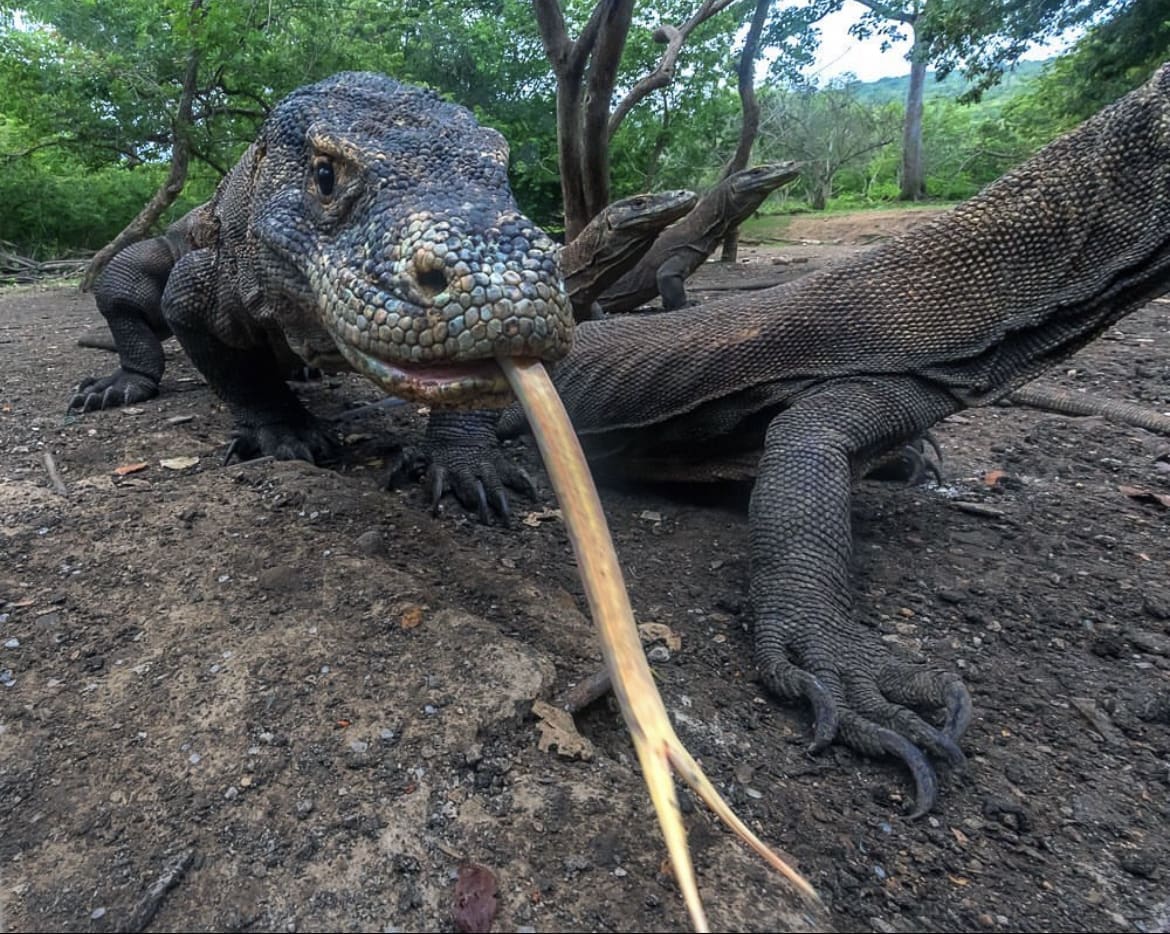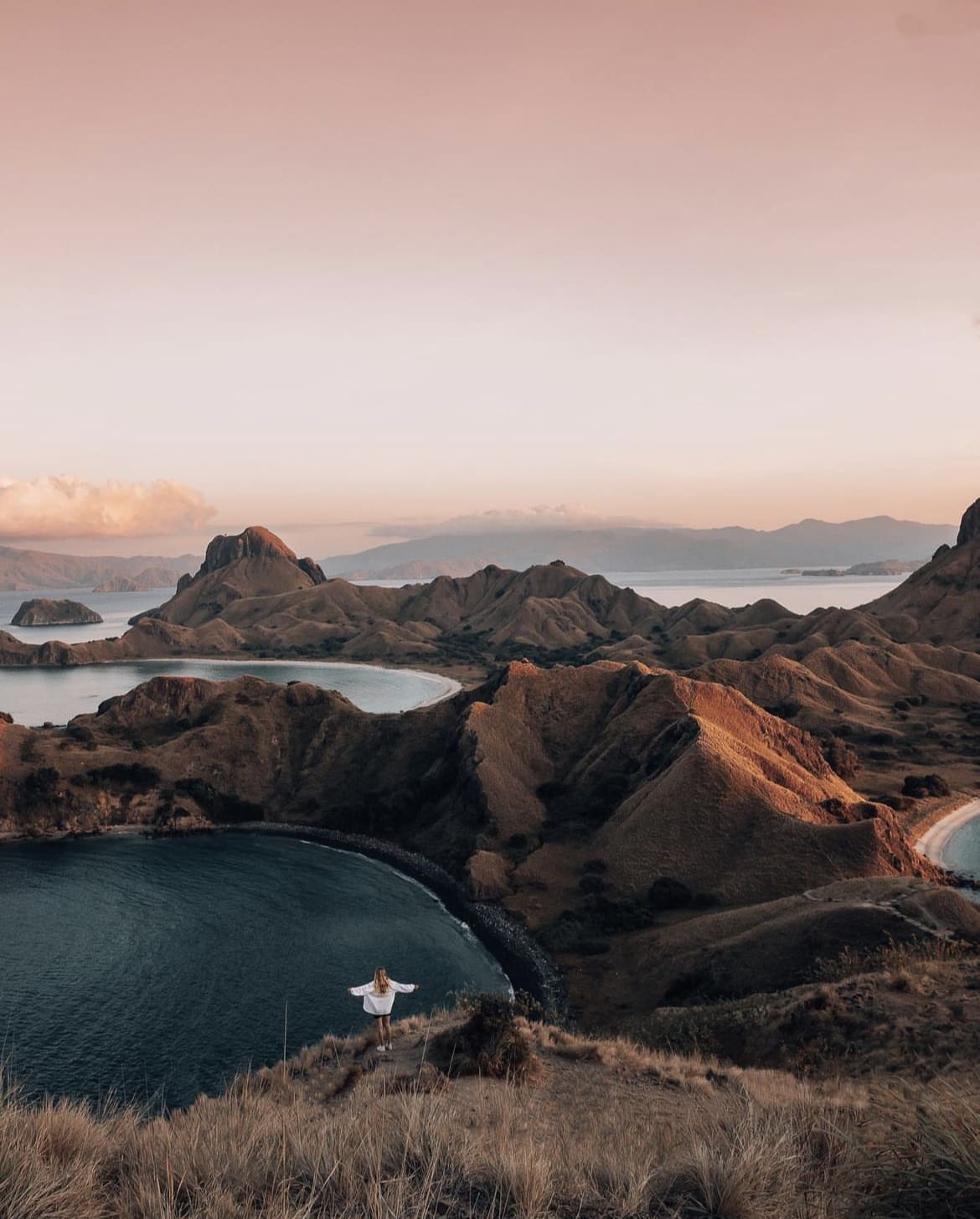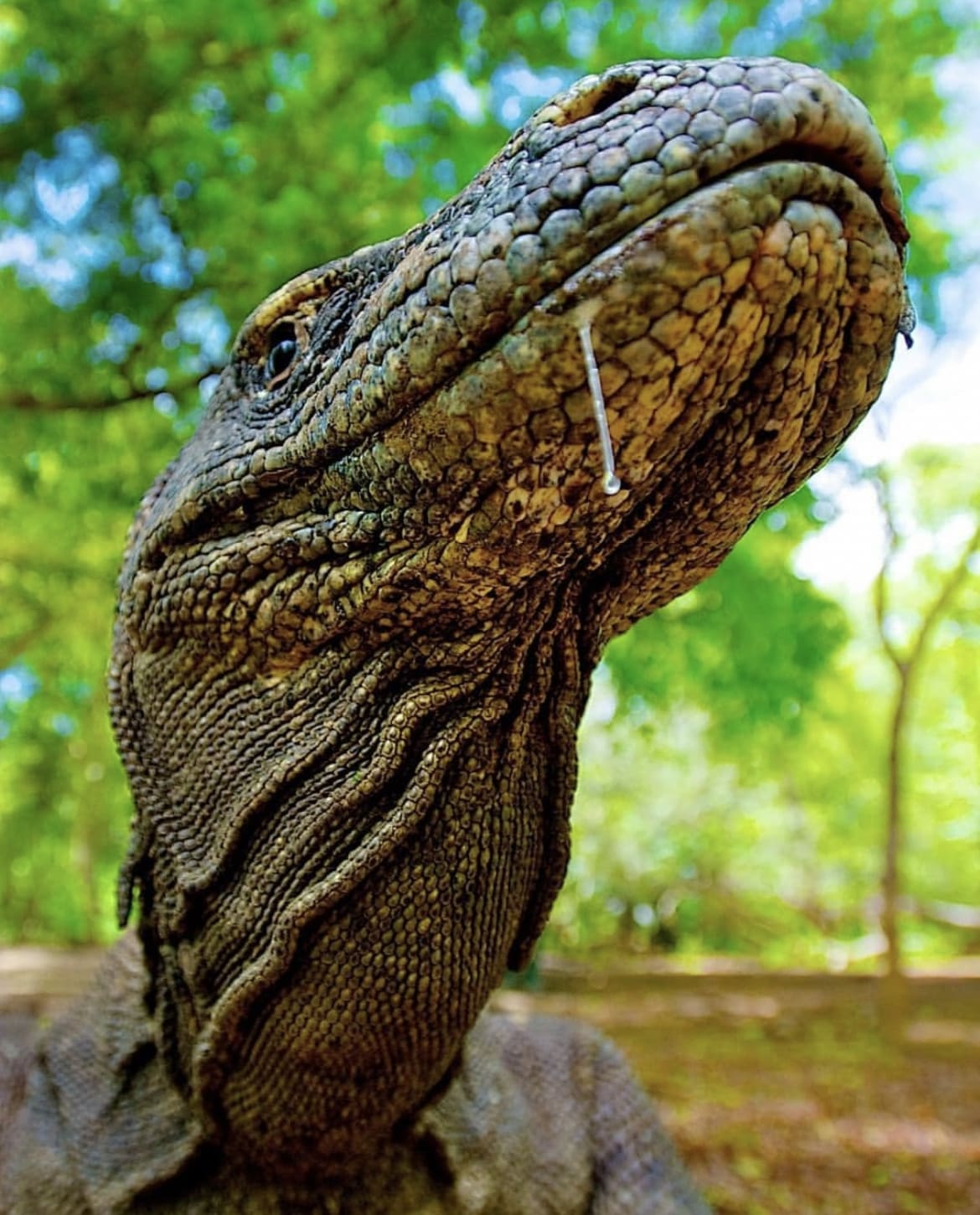One of the most ferocious reptiles on earth, the Komodo Dragon is feared by humans and animals alike!
What is the Komodo Dragon?
The Komodo Dragon is a giant monitor lizard and one of the largest reptiles in the world. It lives on five islands in Indonesia– Komodo, Rinca, Gili Motang, Flores, and Padar. But it originated in Australia about four million years ago. It is an apex predator, which means it has no natural predators. The Komodo have poor eyesight but a keen sense of smell that helps them to detect prey. They can’t swim but can hold their breath for up to 30 minutes. This helps them to hunt prey in the ocean.
Despite their fearsome reputation, Komodo Dragons are gentle giants that play an essential role in their ecosystems. They help to maintain the balance of nature by preying on smaller animals, which keeps their populations in check. In turn, this helps to ensure that plants and other species have enough resources to thrive. Komodo Dragons are also a big tourist attraction in many parts of the world, which brings in much-needed revenue for local communities.

Appearance
What does The Komodo Dragon look like?
Komodo Dragons are usually 3-10 feet (1-3 meters) long and range from 70 to 200 pounds (32 to 91 kilograms). They have a long snout, a powerful tail, and four short legs with sharp claws. Their heads are covered in scales, and they have long forked tongues. Komodo Dragons have yellowish-brown skin with darker patches on their backs. The male Komodo Dragon has a large, spiny crest down its back, while the female has a smaller, less spiny crest. They have tails that are the same length as their bodies and can be used to attack prey.
Komodo Dragons have 60-80 sharp, curved teeth. The teeth are serrated, which helps them rip flesh from the bones of their prey. They also carry a deadly venom in their saliva that can cause paralysis, heart failure, and even death. They also have long claws that help them grab and hold onto their prey while they eat. They have long, muscular tongues that help them smell their prey from up to 4 miles away. Additionally, Komodo Dragons are fast runners and can sprint up to 12 miles per hour. This combination of speed and venom makes them formidable predators.

Behaviour
Komodo Dragons are solitary and territorial. They hunt during the day, usually in the early morning and late afternoon. They typically use ambush tactics to surprise their prey. At night they rest in underground burrows or sheltered crevices. Komodo dragons usually live alone and prefer living in dry, rocky areas. The Komodo dragons are most active during the daytime but may rest near their prey at night. Komodo dragons are social creatures; they will often cooperate to find food. While they are typically solitary creatures, Komodo dragons may gather in large numbers during mating season.
What Does the Komodo Dragon Eat?
Komodo Dragons are carnivorous and will hunt for food any time of day. They prefer smaller mammals, such as deer, wild boar, and monkeys. But they also feed on birds, snakes, lizards, carrion, and even smaller Komodo Dragons. When necessary, they will also scavenge for food. Komodo Dragons have even been known to hunt water buffalo, goats, and smaller Komodo Dragons. They may also scavenge food from carcasses left by other animals.
How Does the Komodo Dragon Hunt?
Komodo dragons have an exciting hunting technique. They can detect the smell of their prey up to 4 miles away, so they often wait in ambush until the target comes near them. Then they attack quickly, killing or paralyzing their prey with a single bite. They then use their sharp claws and teeth to tear the carcass apart, eating the flesh before the venom takes effect. Komodo Dragons have a unique defence mechanism that helps them survive in the wild. When threatened, they may regurgitate their food, which can distract predators and give them enough time to escape. If a Komodo Dragon bites its prey, it releases bacteria that can cause severe infection. This can lead to septicemia (blood poisoning) and death in the victim. It is one of the reasons why the Komodo Dragon is such an efficient hunter.

What is the Komodo Dragon Social Lifelike?
Komodo Dragons are solitary and territorial. They usually only come together to mate or when there is food around. Males have been known to fight over territories, but the fights rarely become serious. Komodo Dragons communicate with each other through vocalizations and body language, such as head bobbing and tail waving.
How Does the Komodo Dragon Reproduce?
Komodo Dragons are oviparous, meaning they lay eggs. Komodo Dragons use vocalizations and body language to attract a mate. Males will often fight over territories and females to show their dominance. Females are more passive in the mating process and may choose a mate based on his size, strength, or ability to provide resources for her offspring. During mating season, the males will try to be as loud and aggressive as possible to attract the attention of prospective mates. The female will lay her eggs and care for them until they hatch, typically after mating. A female will usually lay up to 20 eggs in a single clutch. The eggs take around eight months to hatch, and the young Komodo Dragons will remain with their mother for up to two years before going off on their own. Females reach sexual maturity at three to five years old, while males reach sexual maturity at five to seven years old.
Baby Komodo Dragons or hatchlings are vulnerable to predation when they first hatch, but they quickly develop strong defences and become fierce predators as they mature. Hatchlings typically feed on insects and small animals, while adults hunt larger prey.

Range and Habitat
Where to find Komodo Dragons?
Komodo Dragons are found on five islands in Indonesia: Komodo, Flores, Rinca, Gili Motang, and Padar – a couple of which are also home to stunning pink beaches. They inhabit various habitats, from open grasslands to forests and rocky areas. They like to stay close to water sources such as rivers and streams for easy access to prey. Komodo dragons want to hide in burrows during the hot hours of the day.
Komodo Dragons have adapted to their environment in several ways. They have a high metabolic rate, which allows them to digest large amounts of food quickly and efficiently. Furthermore, they can regulate their body temperature to survive in hot and cold climates. They can also go without food or water for up to 6 months, helping them stay in times of drought and famine.

Conservation
The Komodo Dragon is currently listed as Vulnerable by the IUCN Red List. The population is continuously decreasing, so the species faces a high risk of becoming extinct in the wild. Conservation efforts such as habitat protection, regulation of hunting and poaching, captive breeding programs, and educational initiatives are all helping to protect this species.
Threats to The Komodo Dragon
Komodo Dragons are currently vulnerable to extinction because of habitat loss and poaching. They also compete with other carnivores, such as feral dogs and cats. Other threats include disease, natural disasters, and climate change. Conservation efforts are being made to help protect the species, including habitat preservation and regulations on hunting and poaching.
What is Being Done to Protect the Komodo Dragon?
Conservation efforts are being made across its range in Indonesia to protect the Komodo Dragon. This includes habitat preservation and enforcement of regulations on hunting and poaching. Additionally, captive breeding programs have been established to help sustain populations in zoos. Finally, educational programs have been developed to raise awareness of the species and its threats.
Komodo dragons are a notable species and have captivated people’s imaginations worldwide for centuries. With proper conservation efforts, we can ensure that they remain on our planet for many generations.

Safari
Where is the best safari to spot a Komodo Dragon?
The best place to spot a Komodo Dragon is in the wild on any of the five islands in Indonesia where they are found. The most popular safari destination for spotting them is Komodo National Park, which covers three islands (Komodo, Rinca, and Padar). Here you can take guided tours with local rangers to spot these incredible creatures in their natural habitat.
There are zoos and safari parks with Komodo Dragons around the world. The San Diego Zoo in California, the London Zoo in England, and the Singapore Zoo in Asia are included in the list. These zoos offer up close and personal experiences with these amazing creatures. However, these provide a different experience than seeing them in the wild.

Tips for spotting the Komodo Dragon on safari
- Research the best time of year for the highest chance of seeing a Komodo Dragon.
- Use caution when approaching Komodo Dragons, and do not try to touch or feed them.
- Stay on trails and keep a distance from any Komodo Dragons at your spot.
- Bring binoculars so you can observe them from a safe distance.
- Wear long pants and sleeves to protect yourself from scratches and bites.
- Bring plenty of water and snacks.
- Pay attention to the local guides. They know the terrain best and can help you spot Komodo Dragons.
- Be aware of your surroundings, as Komodo Dragons are fast predators that may suddenly appear without warning.
- Have respect for the Komodo Dragons. They are a protected species and deserve our protection.

Tips for Interacting with Komodo Dragon
- Do not approach, touch, or feed a Komodo Dragon.
- Keep your distance from an agitated dragon, and do not startle it.
- Stay calm and quiet if you encounter one in the wild.
- Do not attempt to move it or pick it up.
- Only bring food with you near an area where Komodo Dragons may be.
- If you encounter a Komodo Dragon in distress, immediately alert the authorities.
- Never try to keep or capture a Komodo Dragon as a pet. Wild animals should be respected for their natural abilities and instincts.
If You Find an Orphaned Komodo Dragon
If you find an orphaned Komodo Dragon, contact the local conservation authorities immediately, and do not try to take care of it yourself. Keeping a wild animal as a pet is illegal and could be dangerous for you and the dragon. Conservationists have unique skills and resources available to care for orphaned Komodo Dragons that will ensure they have the best chance of survival.
Facts about the Komodo Dragon
Scientific name – Varanus komodoensis.
Habitat – Komodo Dragons prefer dry areas as well as coastal mangrove forests.
Diet – Komodo dragons are opportunistic carnivores and eat anything from birds and mammals to carrion and invertebrates.
Life Expectancy – Komodo dragons can live up to 30 years in the wild.
Weight – They can weigh up to 360 lbs Length
Average Length – Komodo Dragons can reach up to 10 feet in Length
Speed – They can reach speeds of up to 12 mph.
Social Behaviour – Komodo Dragons are solitary animals but can live in groups when resources are abundant.

Myths about the Komodo Dragon
Komodo Dragons are believed to be venomous, but this is not true. They have a large variety of bacteria in their saliva which can cause infection or illness if bitten. Komodo Dragons are also believed to be able to change colour when threatened; however, this is also false as they are unable to change colour like chameleons. It has also been suggested that they can jump. However, this is untrue, as they cannot jump due to their large size. Do they spit fire? No, like dragons from mythology, Komodo Dragons do not spit fire.
Conclusion
The Komodo Dragon is a fascinating species and an iconic part of Indonesian wildlife. This incredible reptile can continue to live on with reasonable conservation efforts for generations. By following the safari tips provided, visitors should be able to spot these creatures in their natural habitat safely and respectfully. It is also essential to keep any interaction with them as minimal as possible and contact the authorities if you encounter an orphaned Komodo Dragon. So explore the lands of Indonesia and have a once-in-a-lifetime experience with these fantastic creatures!
